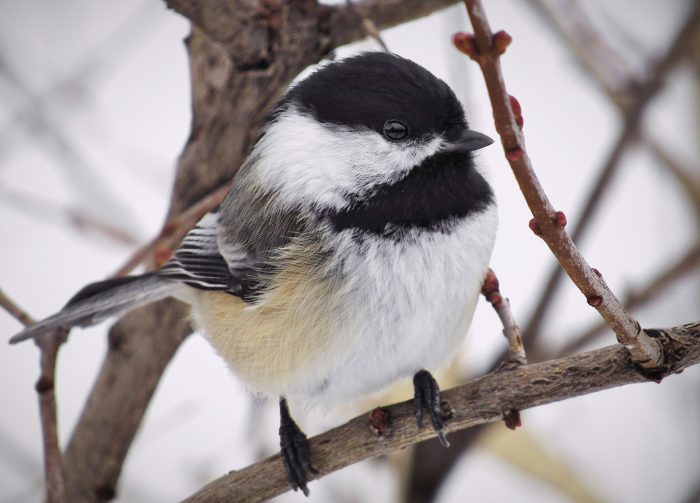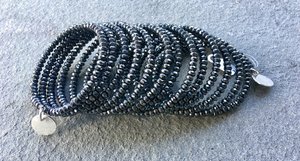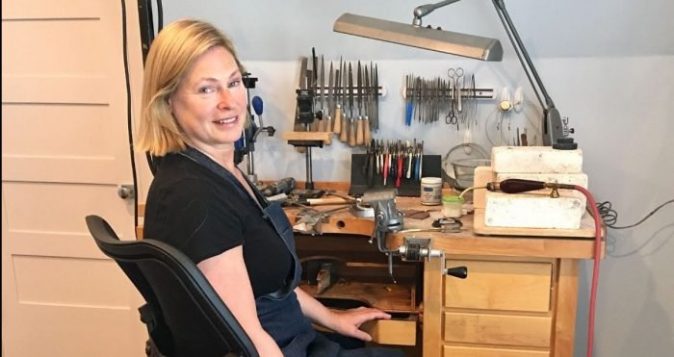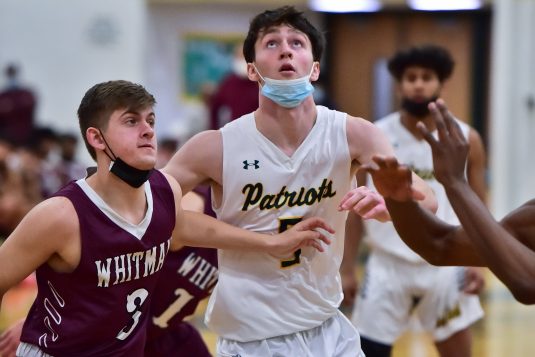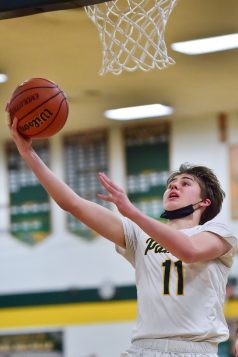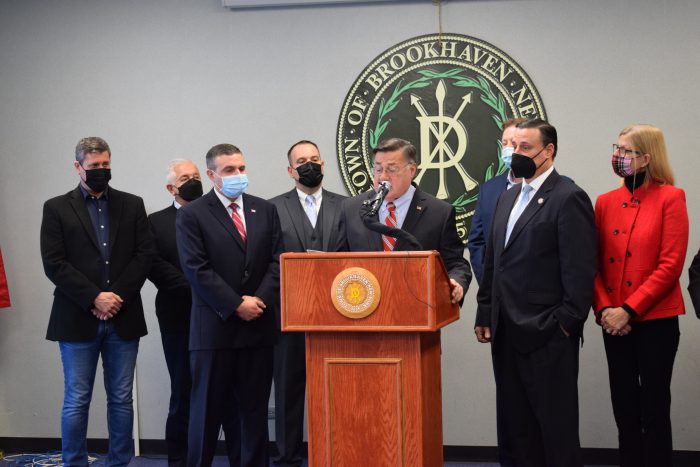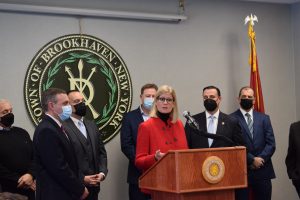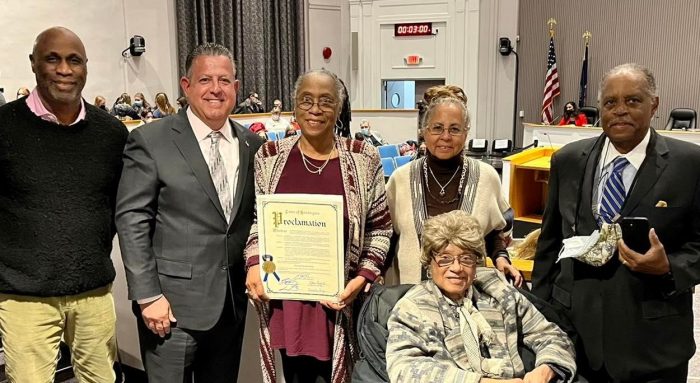By John L. Turner
If you’re attracted to birds then you’re also very aware of how they can elicit reactions. Watching an Osprey dive into the bay with talons flaring and pulling away with a wriggling fish, creates head-nodding awe. A Scarlet Tanager or Baltimore Oriole flitting among oak flowers in the dappled sunlight of a Spring forest produces a breathtaking wow. There’s one bird, however, that elicits a different response —whenever I see one it automatically puts a smile on my face, often followed by a verbal “hello little fella” response. The species? The Black-capped Chickadee.
Black-capped Chickadees are the definition of cute. They’re active, vocal, and small, have an extensive and distinctive black throat bib, and a head fitted with a black cap (the species part of the scientific name Poecile atricapilla means “the black hair of the head” and Poecile is Greek for pied — a reference to the two tone look of the bird — grey on top, white on the bottom). Given the distinctiveness of their plumage they are not likely to be confused with any other bird here on Long Island.

Chickadees are animated birds, often flitting around in both trees and shrubs, probing the recesses of bark, amidst leaves, and along branches for prey, often vocalizing their well-known onomatopoeic “chick-a-dee” call (or their ‘hey sweetie’ whistle) as they move about. They are quite adept at finding prey and due to special muscles and tendons in their legs are able to hang upside down to probe for food on the underside of leaves and branches.
In wintertime chickadees form mixed species flocks with other songbirds including Tufted Titmice, Downy Woodpecker, both White-breasted and Red-breasted Nuthatches, Ruby-crowned and Golden-crowned Kinglets, and Brown Creeper. These flocks move systematically through a woodland seeking food. By flocking this time of year with other species chickadees can feed more efficiently since there are more eyes to discern predators (Eastern Screech-Owls and Sharp-shinned Hawks eat chickadees) and to find food.
Wait you say, maybe more eyes helps spot predators but don’t the other birds in the flock mean direct competition for food at a time of year when food supplies are at a yearly low? Wouldn’t this competition for food outweigh the benefit of being able to more easily see predators? Actually no. Ecologists who have studied this find these birds feed in different parts of the tree — nuthatches and creepers on the main trunk, the chickadees and titmice on larger branches, and kinglets on the smaller side branches. By doing this — a concept ecologists call “niche partitioning” — they are able to divvy up a common resource in a way that reduces or eliminates competition between them. Ecological elegance.
Chickadees, being small animals that live in harsh climates where the temperature in the winter routinely drops well below freezing (in fact in northern Canada and Alaska they may experience night-time temperatures as low as -50 degrees!!), have, not surprisingly, evolved a number of behavioral and physiological adaptations to increase their likelihood of surviving the cold.
At night they seek out cavities or dense vegetation where winds are blocked or reduced, resulting in slower heat loss (bent tail feathers are a telltale sign of this cavity nesting habit — look for crooked tail feathers with the chickadees visiting your feeders). Studies have documented a 50% reduction in heat loss in cavity roosting birds as compared to those which roost in more open situations. On rare occasion, chickadees huddle together in cavities, further reducing heat loss. They also tuck their bill and front part of their head (and the unfeathered eye) into their shoulder feathers to reduce heat loss from these unfeathered areas.
Perhaps the most remarkable adaptation — called regulated hypothermia — allows for chickadees to reduce their body temperature and metabolism, an effective strategy for reducing their heat loss at night; by lowering their body temperature from 108 degrees (they are hot-blooded!) to the mid-to-low 90’s overnight, chickadees can reduce the amount of energy they burn during the night by 20-25% — perhaps the difference between life and death. To help stay warm chickadees intentionally shiver through the night, burning the fat they were able build during the day from feeding. So, while they’re very cute, chickadees are also tough creatures!
About a decade ago I watched a pair of chickadees excavate a nesting cavity in a dead grey birch. Chickadees have small bills and are not able to excavate cavities in live wood, depending instead on soft, rotting wood like the birch they were working on. The tree was located about ten feet from the edge of a paved bike trail in the Massapequa Preserve but the birds didn’t seem to mind the traffic.
I watched the industrious pair work to excavate the cavity, dutifully carrying the wood chips away in their bills, flying some distance from the nest site before spreading the chips (presumably to make it impossible for any nest predator to cue in to the nesting location from the chips). I monitored the progress of the nest and the success of the fledglings over the next couple of weeks; I’m not sure of the total but on several occasions I saw three young birds together.
There are six other chickadee species found in North America. The Carolina Chickadee is the chickadee of the southeastern United States, breeding as far north as southern New Jersey where it is displaced by the Black-capped (there are numerous reports of the two species interbreeding, resulting in hybrids). In the west there’s the Mountain Chickadee and along the Pacific Coast the beautiful Chestnut-backed Chickadee. The Mexican Chickadee barely enters the United States in southeastern Arizona.
In the far north we have the Gray-headed Chickadee and the Boreal Chickadee; the Boreal Chickadee has a large range across Canada dipping down into the United States. It breeds in the Adirondacks so New York has two resident chickadee species. Titmice, of which Long Island has the Tufted Titmouse, are close cousins to the chickadees. In Europe and Asia there are many more chickadee and titmice species. The Black-capped Chickadee is the state bird of Massachusetts and Maine.
If you wish to experience Black-capped Chickadees up close and personal, plan a winter trip to the Elizabeth Morton National Wildlife Refuge in Noyac. Here, a population of tame chickadees, along with Tufted Titmice and White-breasted and Red-breasted Nuthatches, will land in your hand if it’s filled with unsalted sunflower seeds (they don’t eat millet and some of the other ingredients in commercial bird feed).
If you get there early you may have several birds lined up waiting to land in your seed-filled hand waiting not so patiently to grab a seed. I’ve had two species of birds land on my hand at one time, assessing which seed to take, one of which is almost always a chickadee. Some birds flit to a spot nearby to hammer open the seed while others fly farther away to cache it for a future meal. Chickadees, you see, have very good spatial memories and can remember where they’ve hidden hundreds of food items. (If you end up with a lot of unused seed please take it home for another trip rather than dumping it along the trail where it could attract unwanted animals).
Being able to watch these wild, free-flying, but trusting birds a mere arm’s length away is an absolute joy — children love it and it is a great way for them to connect with wildlife and nature. I hope you feel the tickling of tiny chickadee feet on your outstretched hand sometime this winter, thereby making the acquaintance of these avian ambassadors. Bet they put a smile on your face too.
A resident of Setauket, John Turner is conservation chair of the Four Harbors Audubon Society, author of “Exploring the Other Island: A Seasonal Nature Guide to Long Island” and president of Alula Birding & Natural History Tours.

